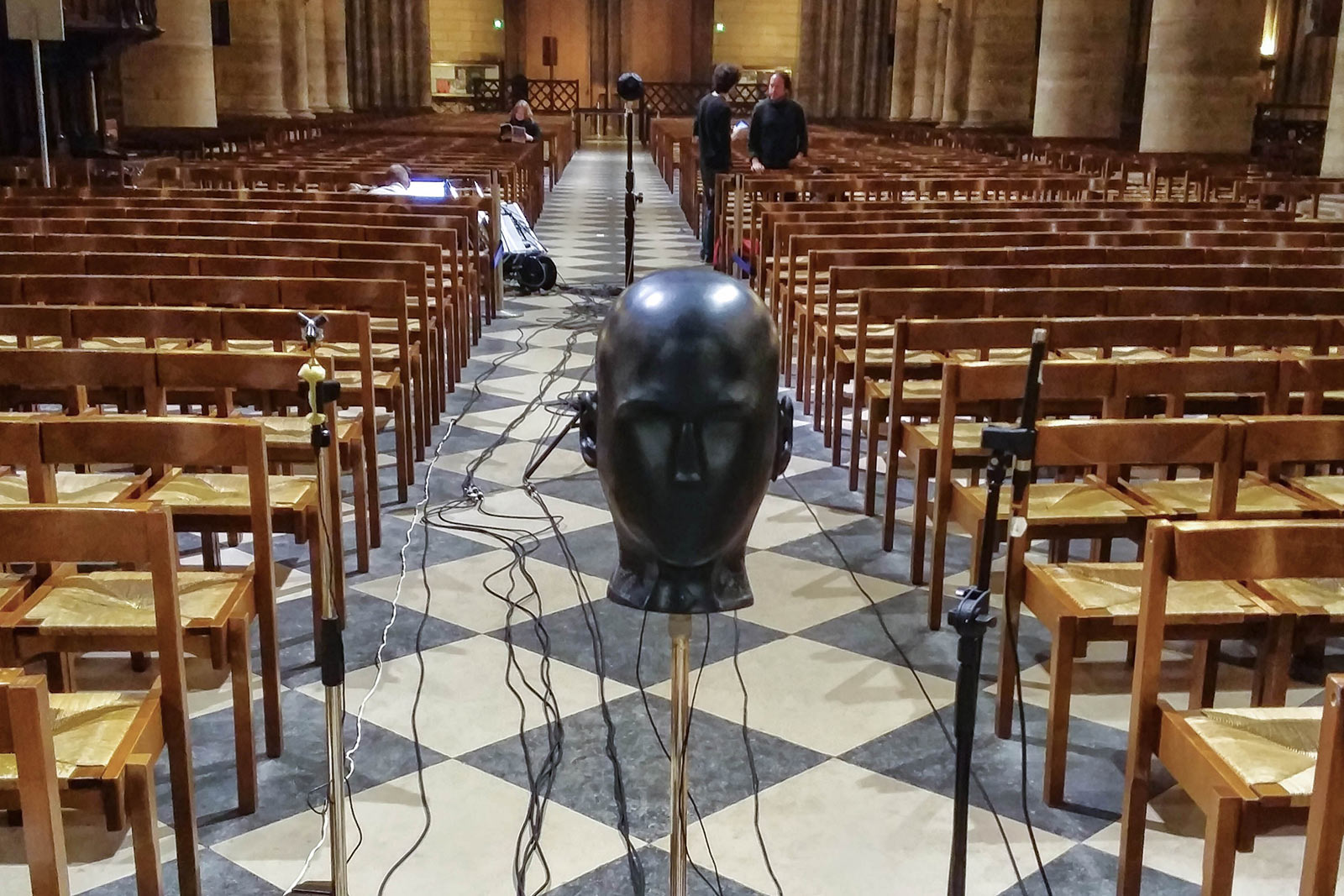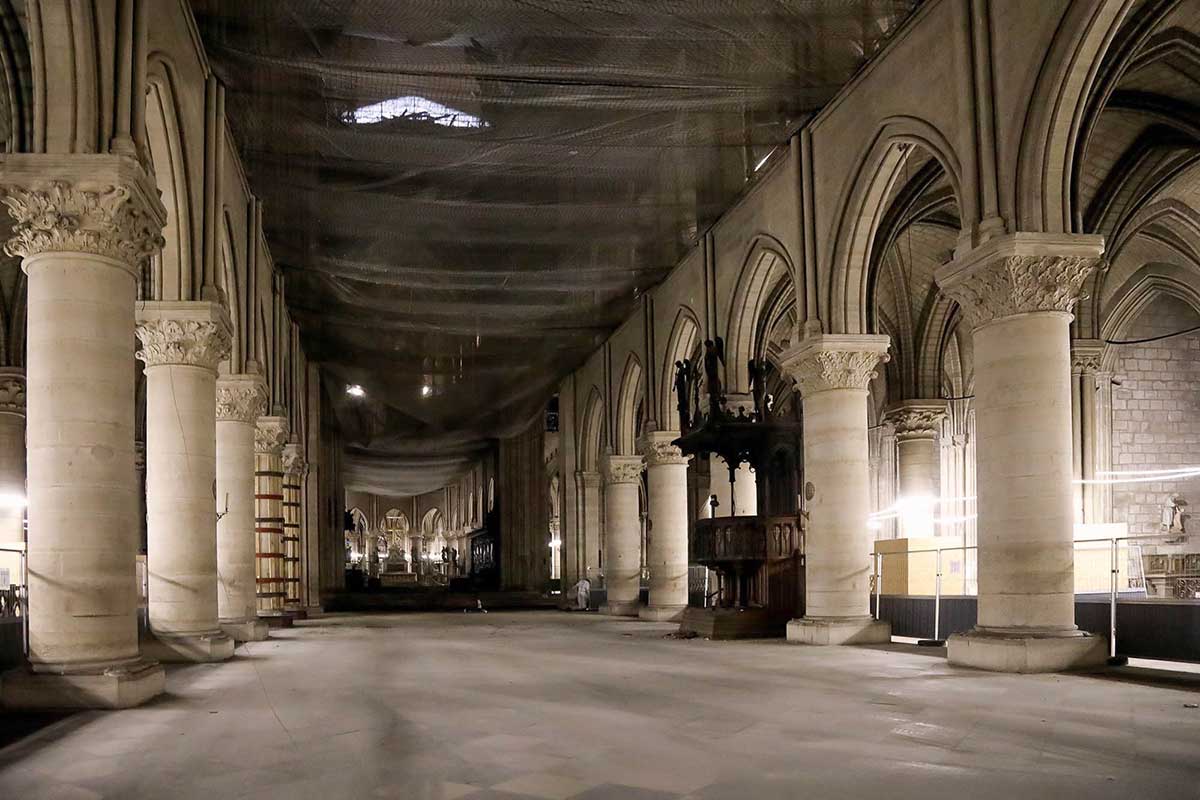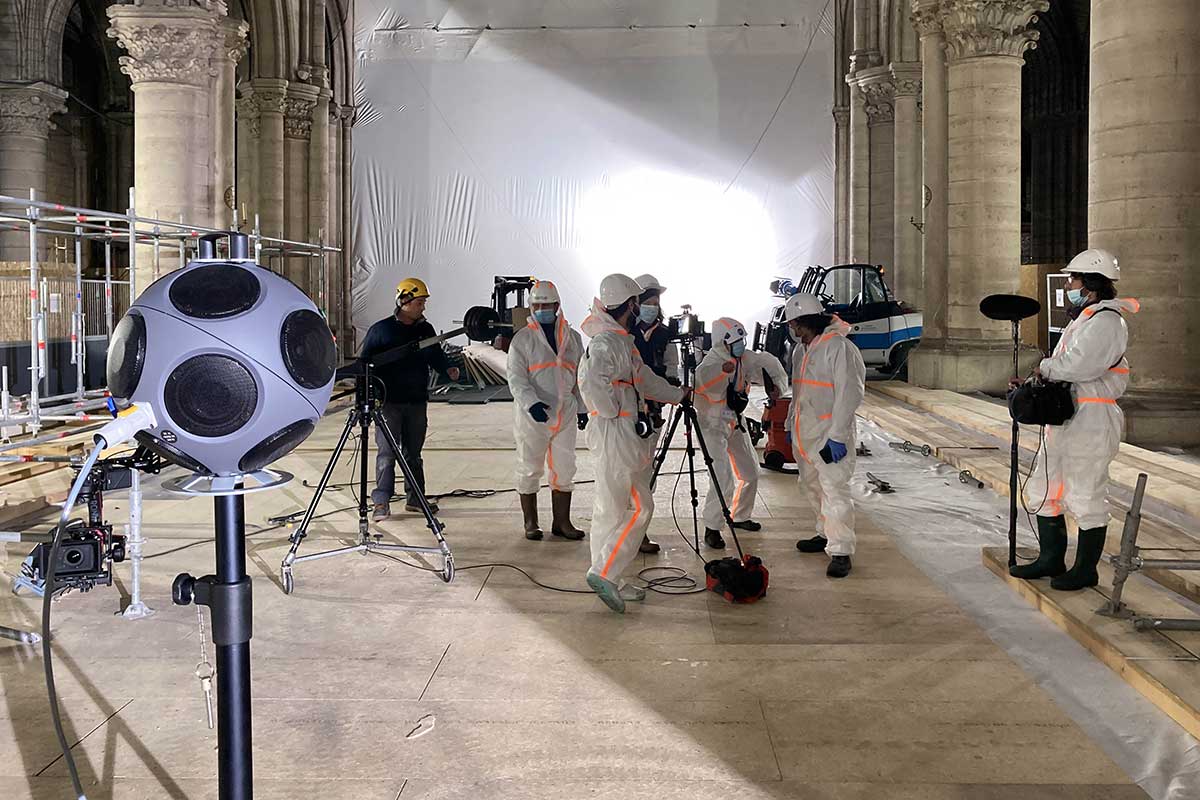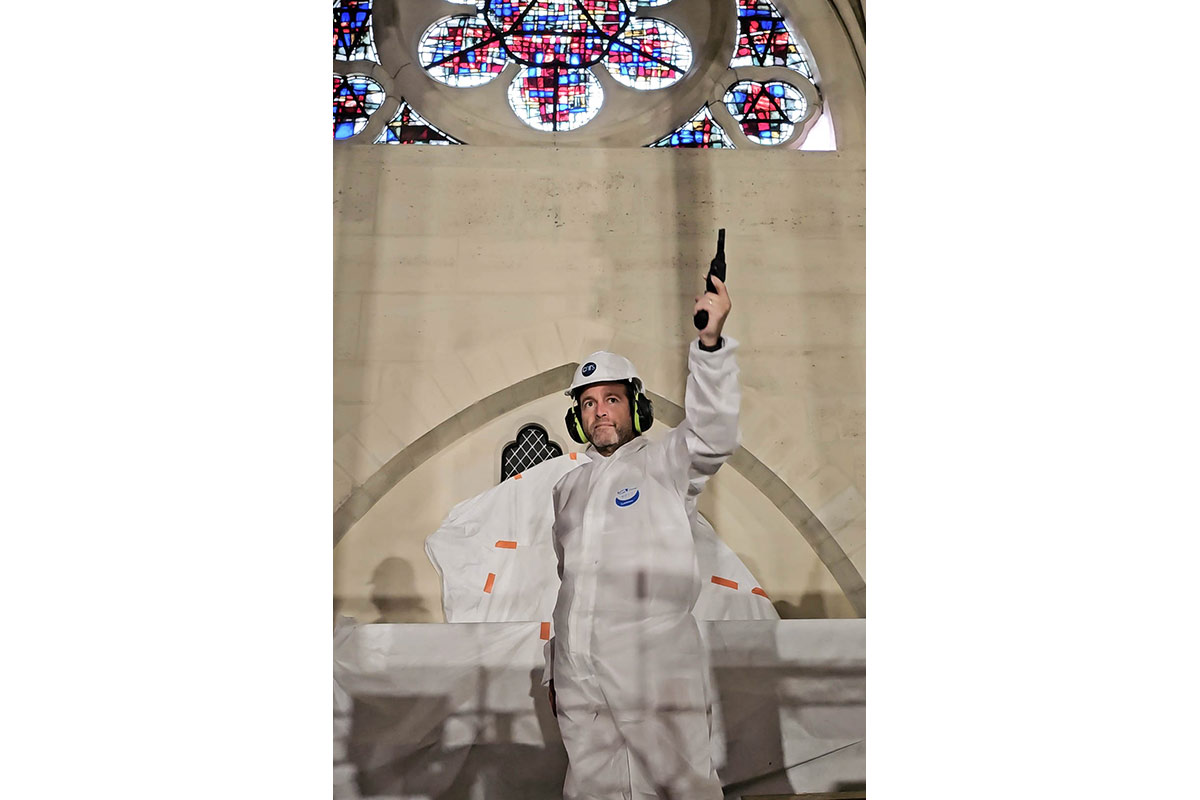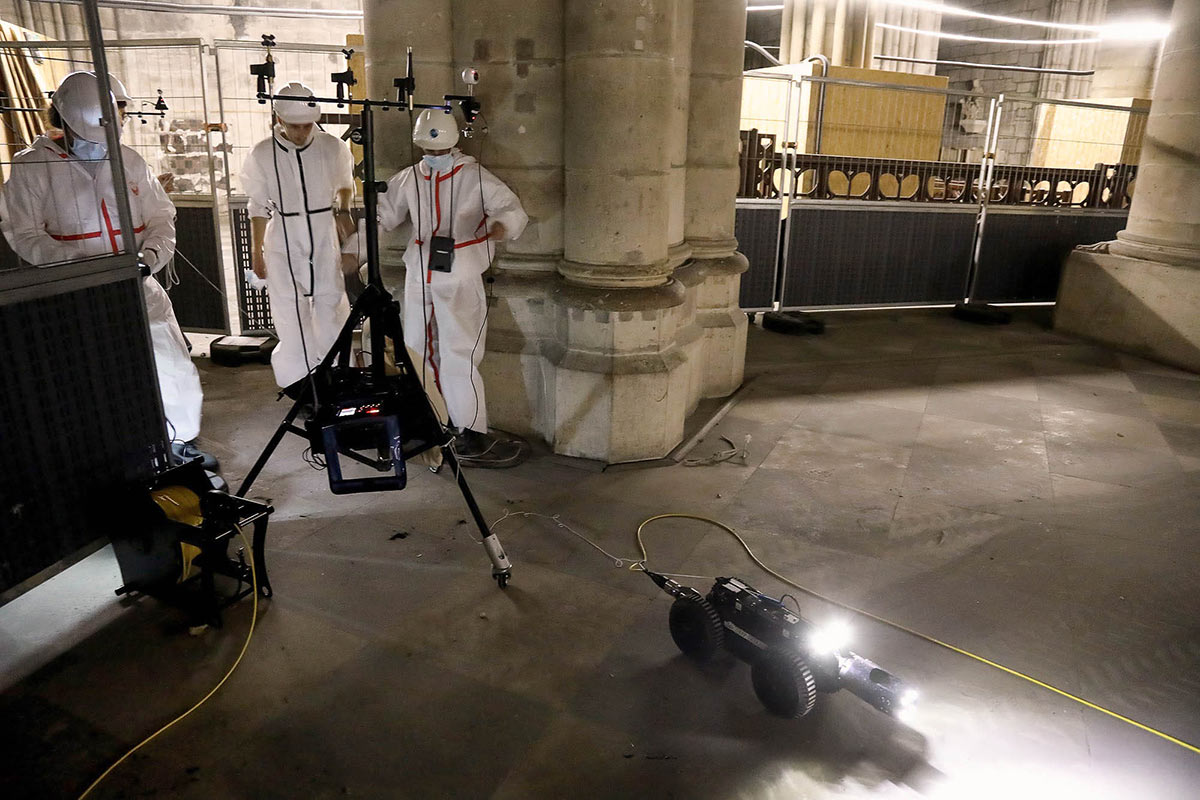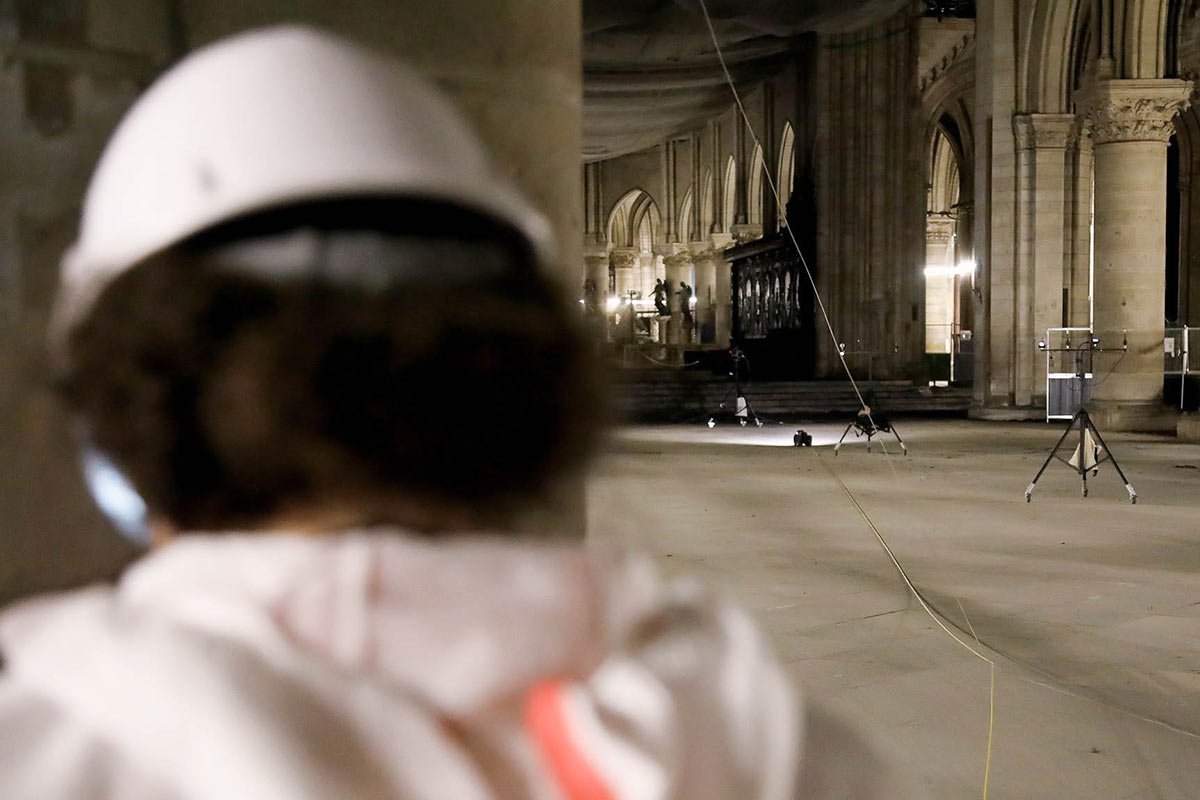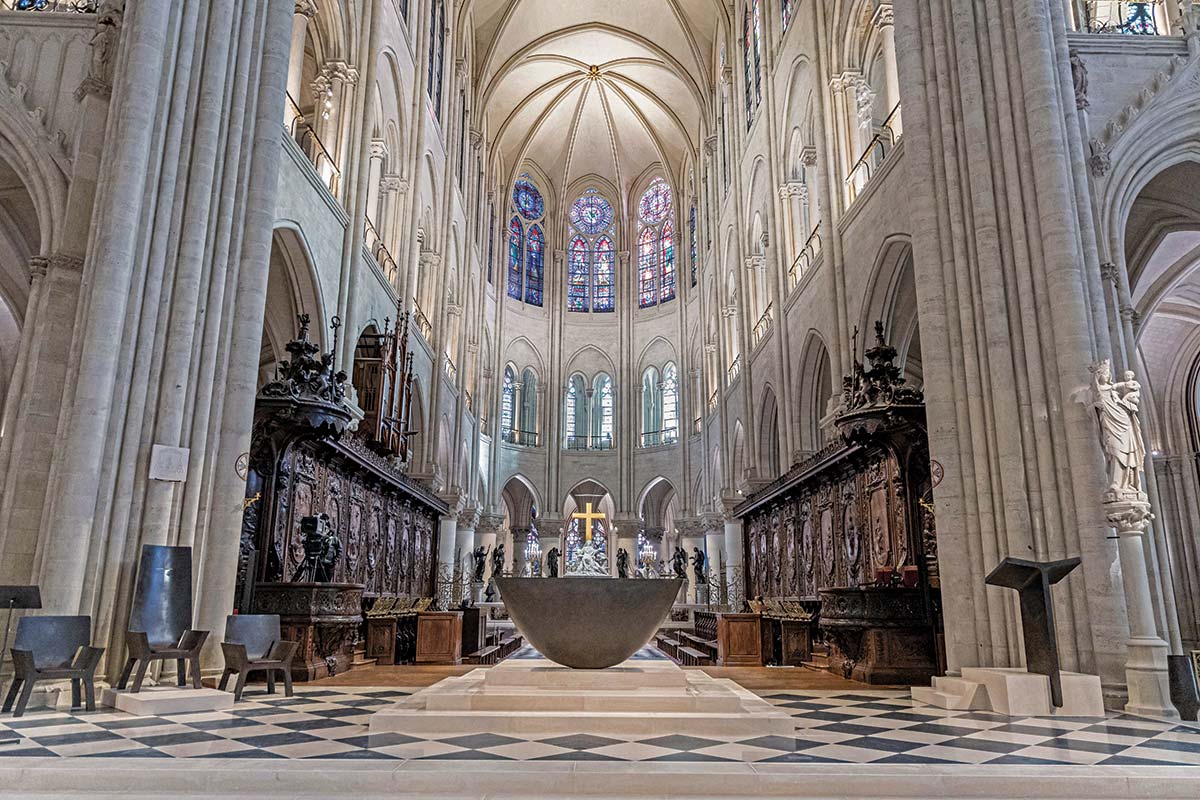An Evolving Historical Soundscape
Re-creating the soundscape of a specific place, like Notre-Dame Cathedral, can be staggeringly complex. Even small changes in the building’s content can have a big effect on its acoustics.
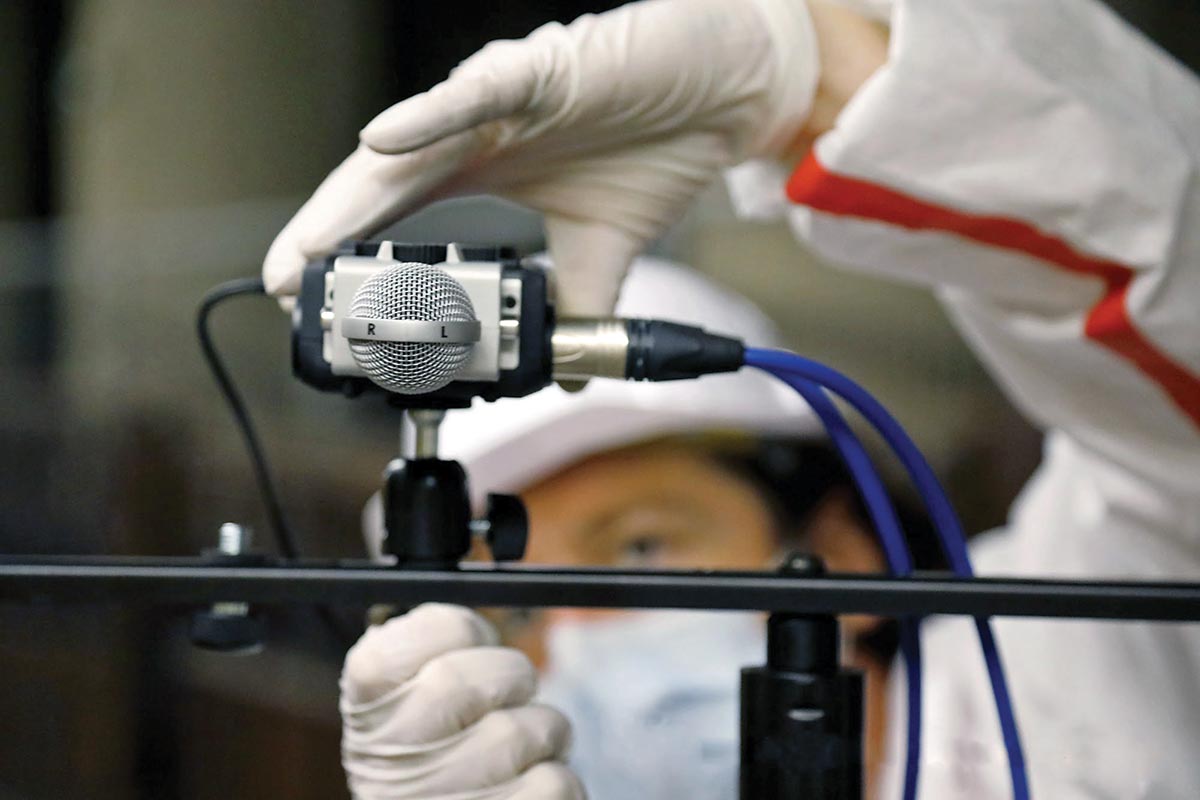
Photo Credit: Chantier CNRS Notre-Dame Groupe Acoustique
By David Levin
Creating an acoustic model of a specific space might not seem that difficult.
After all, toy microphones and karaoke machines can drench singers’ voices with reverberation that evokes a performance in a massive concert hall. Yet the digital algorithms that allow this effect re-create only a simplified, hypothetical kind of space. Re-creating the soundscape in a specific real-world place, like Notre-Dame Cathedral, takes a far more nuanced effort.
To create their acoustic model of Notre-Dame in 2015, Katz and his team set up more than 30 microphones. They then moved a sound source to different locations inside the building. At each spot, the team played a loud tone that swept from ultra-low frequencies to dog-whistle highs, and recorded the reverberations it made throughout the room. (The group also recorded bangs and pops from bursting balloons and starter pistols for good measure.) The process, repeated dozens of times, provided huge amounts of acoustic data.
These recordings provided a baseline. The remaining work took place largely inside a computer. Katz’s team built a detailed 3D model based on architectural plans and laser scans of the cathedral’s interior, then gave each surface of that virtual model precise sonic properties. Freshly cut limestone walls, for instance, reflect and diffract sound better than ones covered in years of soot and dust. Bare marble floors reflect the human voice more sharply than areas covered by woven mats. Even furniture choices, like the large wooden screens used during the Middle Ages to separate Notre-Dame’s choir from the masses, had to be taken into account.
Katz, Mullins and their team visited museums and archives throughout France to take acoustic measurements of period artifacts, like handmade medieval rugs and 500-year-old tapestries in the Louvre. The team even re-created the thin layer of straw that, in the cathedral’s earliest years, would have been spread on the floor during rainy seasons. With this information in hand, the group used historical records of Notre-Dame’s contents to model the cathedral in different eras.
Taking minute details into account are necessary to re-create a building’s sound accurately. Even small changes in the building’s contents can have a big impact on its acoustics. As Katz points out, “Between the 1980s and 2015, we saw a noticeable change in the acoustics, because the cathedral added something simple: a runner carpet.
Find more behind-the-scenes photos, videos and bonus content on our Digital Extras page.
